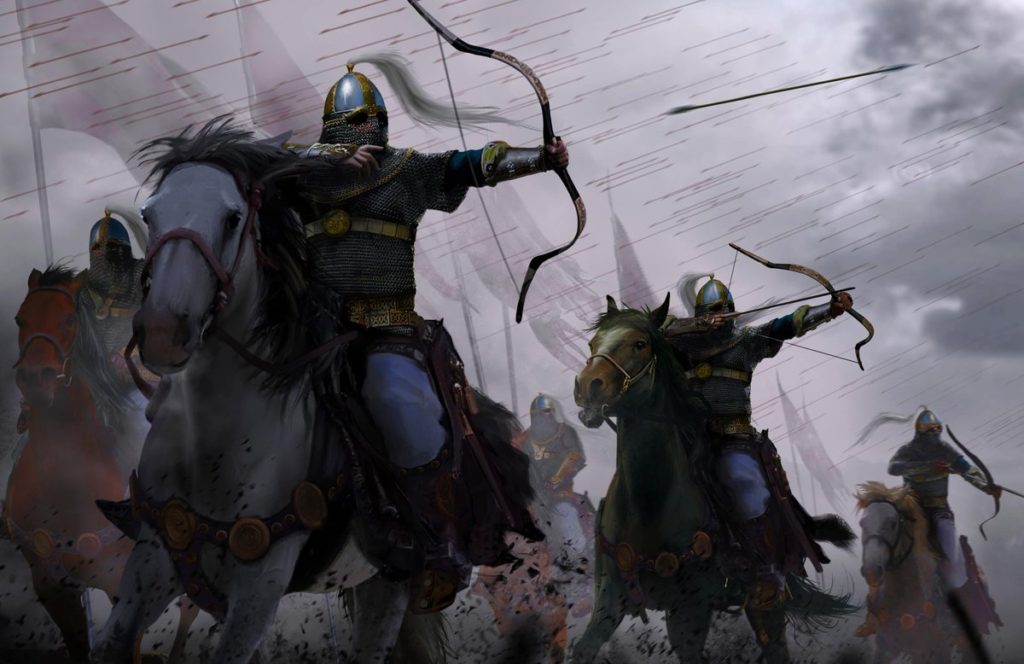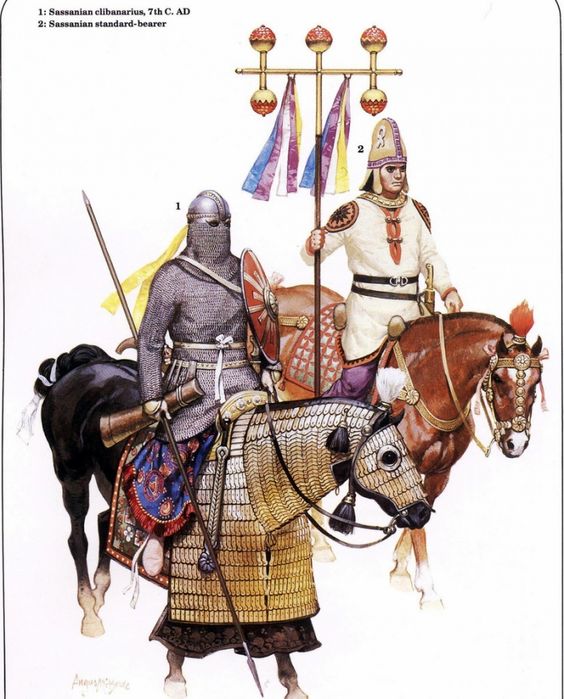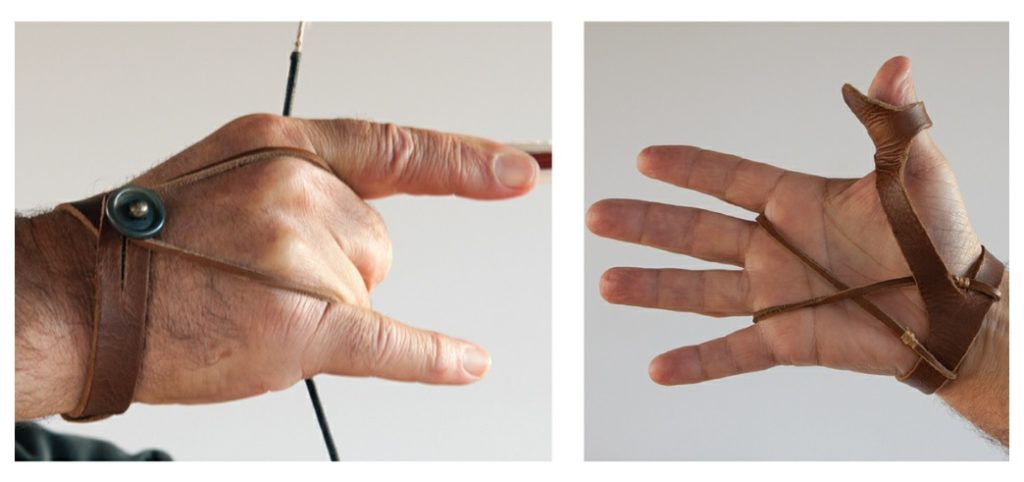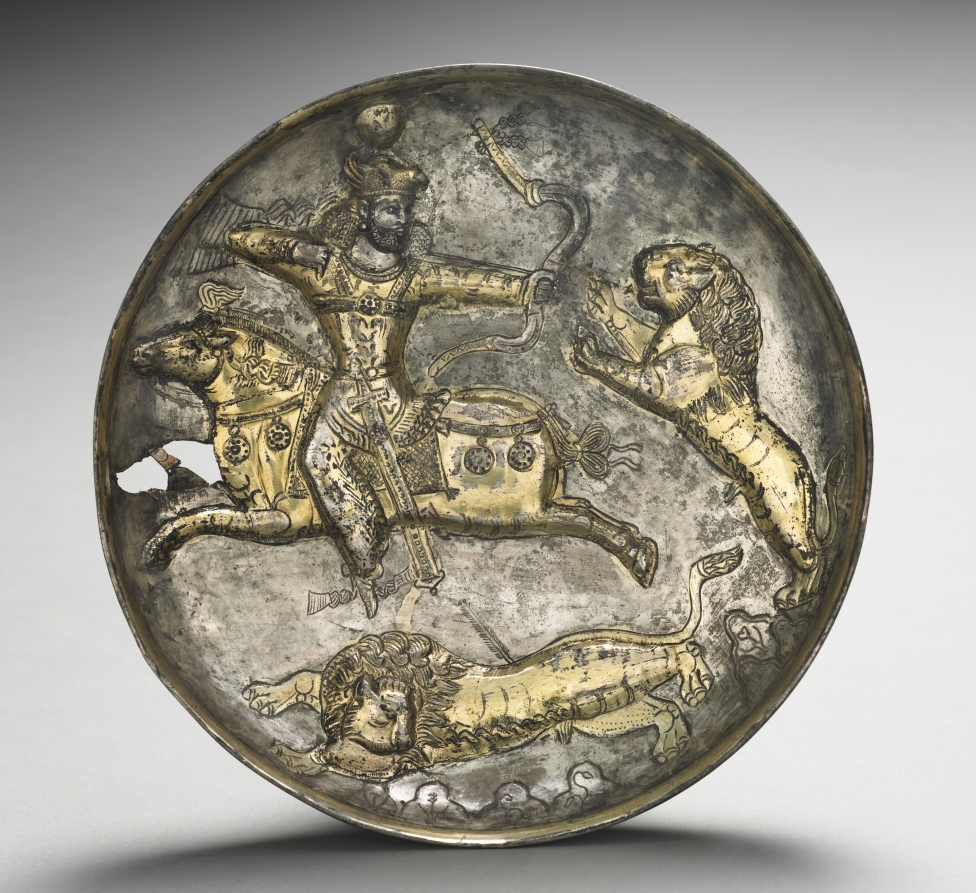Sassanid Archery
Sassanid Archery & The Sassanid Bow
The Sassanids were the last and longest-lived dynasty of Persia before the Muslim conquest of the seventh century A.D. They employed many of the cavalry tactics of the Achaemenids and Parthians who came before them. Relying on powerful composite bows, Sassanid archery involved shooting on foot, as well as on horseback. Being neighbors with Turkic peoples in the north, as well as the Huns, and inheriting the domains of the Parthians, the Sassanids were well acquainted with the martial tactics of the mounted archers. Beautiful depictions of Sassanian warriors, mounted and in full combat apparel, discharging their bows are well preserved on metal plates. This article explores Sassanid archery and the Sassanid bow.

Sassanid Empire
Before delving too deeply into the nuance of Sassanid archery, let us briefly explore the Sassanids themselves and their empire of late antiquity.
The Empire was founded by a local Iranian ruler named Ardashir I who gradually rose to prominence as the Parthians grew weak from wars with their great rival Rome, as well as from internal struggles for power.
The dynasty was officially established after a decisive defeat of Artabanus IV, the last Parthian monarch, at the battle of Hormozdgan in 224.
Ardashir I set out to restore the ancient empire of the Achaemenid Empire by expanding Iran’s influence. The Parthians were seen by some local powers as usurpers and outsiders who had taken power by force and not by legitimate hereditary means. The Sasanian Empire at its height encompassed all of present-day Iraq and Iran and stretched from the Eastern Mediterranean (Egypt, modern-day Turkey) to Pakistan and parts of southern Central Asia.

The Sasanians oversaw a golden age during the 400 years of its reign. They tolerated the multitude of various cultures and faiths of their subjects, yet were able to rejuvenate Zoroastrianism as a unifying force. Through strong centralized government, they oversaw the building of great monuments and public works.
It was the Sasanians who transferred Persian culture to the coming Islamic culture, exerting great influence with regards to architecture, art, literature, and philosophy.
Sassanid Cavalry
The armies of the Sassanids included a mixed and varied force of infantry and cavalry recruited from local sources as well as mercenaries. However, the most prestigious and notorious component of the Sassanid armies was the cavalry.
The army units and organization of the previous Parthians were retained and consisted of light cavalry, primarily horse archers, and the heavy cavalry, the infamous Cataphracts.

Light cavalry units were recruited from nomadic tribes to the north, notably Turkic tribes such as the Hephalites and Khazars.
The Cataphracts were made of noblemen who underwent extensive military training.
Another aspect of the Sassanian cavalry that is worth mentioning is the use of war elephants. Unlike the Parthians who came before, the Sasanids recruited and trained an elephant corps from the Indus Valley civilization. The war elephants apparently made an excellent platform from which to discharge arrows. Their presence on any battlefield would also be quite intimidating from a psychological warfare point of view.
Sassanid Cataphract
The word Cataphract is a derivative of the Greek κατάφρακτος kataphraktos (plural: κατάφρακτοι Kataphraktoi) meaning “totally enclosed” or “completely armored”. The prefix kata-/cata- implying “intense” or “completely”)
The fighting equipment of the heavily armed Sasanian horsemen was:
- helmet, hauberk (Pahlavi griwban)
- breastplate
- mail coat
- gauntlet (Pahlavi abdast),
- girdle
- thigh-guards (Pahlavi ran-ban)
- sword, mace,
- archery equipment: bowcase with two bows and two bowstrings, quiver with 30 arrows, two extra bowstrings
- horse armour (zen-abzar).

Greek historian, Ammianus Marcellinus’s description of Shapur II’s cavalry sheds some light on how heavily equipped it was:
“All the companies were clad in iron, and all parts of their bodies were covered with thick plates, so fitted that the stiff-joints conformed with those of their limbs; and the forms of human faces were so skillfully fitted to their heads, that since their entire body was covered with metal, arrows that fell upon them could lodge only where they could see a little through tiny openings opposite the pupil of the eye, or where through the tip of their nose they were able to get a little breath. Of these, some who were armed with pikes, stood so motionless that you would have thought them held fast by clamps of bronze.”
Sassanid Archery & The Thumb Release
Being the inheritors of the previous Parthian domains, as well as neighbors to various mounted nomads, the Sassanians would have been all too familiar with the techniques of archery used during their time.
Powerful composite recurve bows, expertly crafted from wood, horn, and sinew, would have been their go-to weapons. Sassanid archery was a prized skill during the dominion of the last pre-Islamic empire of the Middle East.
One of the more intriguing aspects of Sassanid archery is the uniqueness of their draw. Being heavily influenced by the Parthians as well as various nomadic tribes to the north and east, the Sassanids would have encountered archers who loosed their bows with a thumb draw, also sometimes referred to as an eastern or Mongolian draw.

To perform the typical thumb draw the thumb hooks the string and the index finger is secured over the thumbnail for additional support.
The Sassanids however, as can be discerned from artwork, most notably on metal plates, are shown to have an entirely unique draw. It is not known for certain, yet it appears that the thumb may have been used to engage the string, with the middle and ring fingers resting on top of the thumbnail. The index finger is free and often depicted as outstretched, possibly along the arrow shaft. The pinky finger is also unengaged. It looks like the archers are giving the “devil’s horns” gesture as is or has been quite popular to do in the rock and roll era.
Having the index finger outstretched and placed along the shaft of the arrow would help secure the arrow in place along the side of the bow. Another practical reason for outstretching the index and pinky finger is that it would anatomically encourage the other fingers to open faster.
It could also be argued, that the Sassanians were, in fact, using a finger draw, more similar to the Mediterranean draw than the thumb draw. Instead of the thumb engaging the string, the middle and ring fingers would draw the string, with the thumb resting over the drawing fingers to form a lock. The issue does not seem to be settled.
Hand Position and Release Method
One interesting feature of some of the depictions of archers at full draw on metal plates seems to be the angle of the draw hand. The depictions vary, and as previously mentioned, this may be due to artistic oversight, yet some of the draw hands of the Sassanian archers seem to be either vertical, while others are clearly depicted as having hands turned towards the horizontal.
In order for the thumb, or thumb ring to be in full contact with the string, the hand is in a horizontal position, with the palm of the hand parallel to and facing the ground. When the hand is turned towards a more vertical position, the thumb and/or thumb ring will not fully engage the string. This method of drawing the bow with the thumb is still practically possible and allows for a faster disengagement from the string due to the decrease in contact and friction with the string as opposed to a fully horizontal hand position.

For a more in-depth analysis of the Sassanid archery and their unique draw, please check out the video below!
Sassanid Archery & The Shooting Glove
The Sassanids are sometimes depicted as wearing a particular device on their drawing hand. It is visible on the back of the hand as two cross straps, possible leather. What is going on on the other side of the “glove” is not clear. Knowing this would of course help us in determining what style of draw they were using; finger draw or thumb draw. Modern reconstructions of this Sassanid archery shooting glove have been reproduced to aid in drawing the bow in both finger and thumb style draws.

Sassanid Archery Depicted on Plates
The Sassanians were an artistic group of people. During the 400 year reign of this dynasty, Persian art, architecture, and culture, in general, went through a golden age. They would go on to influence much of the Islamic world, especially in art and architecture.
One of the most fascinating archeological finds from the Sassanian era (224–651 A.D.) is the several metal plates found throughout their old domains.
They vary in size, but most are approximately 25 to 30 centimeters in diameter. Being exquisitely crafted, they are typically made from silver. The usual theme depicted on these plates is the Sassanid king on the hunt.

Although ancient artwork was idealized to a certain extent, the depictions are highly detailed and skillfully crafted. The depictions on these plates give us some interesting insights into Sassanid archery.
Firstly the artwork depicts the shape of the composite bow the Sassanids used during this time. It appears with exceptionally long siyahs (the straight, non-bending tips of the bow). The artwork shows the archer at full draw, with the bow under maximum strain. The bow exhibits the classic curves of composite recurve bows used throughout the steppe.
The archers, being depicted at full draw, also illustrates the unique draw of the Sassanids as discussed above. The draw seems to be quite a healthy length, with most archers drawing to the ear and some well past the head.

Even though these plates had a distinct style which can easily be recognized as Sassanian, a wide variety of shooting configurations and hunts are shown. Some of the archers shoot forward in the saddle, while others perform the infamous Parthian shot, shooting backward at full gallop. Some plates even show the mounted archer sitting backward on the horse, shooting to the rear. Although horses seem to have been the preferred mode of transport for royalty, archers and cavalrymen are also depicted riding camels and elephants.
The Sassanids and the Huns
The Sassanian Empire and their arch-rival the Byzantines (East Romans) did indeed have many things in common. One of these commonalities was their nomadic enemies on their borders. Both the Byzantines and the Sassanians were nearly constantly engaging with the nomadic hordes to their north and east.
While the Byzantines would have their hands full with the Hunnic tribes who would migrate westwards into Europe and reach their height of power under their infamous king Attila, the Sassanians had to deal with other Hunnic tribes who were raiding and pillaging their northern frontiers.

In the early 400s, tribes known as the “White Huns” or Hephalites attacked and raided northern Iran. They were expelled and reappeared several times throughout the Sasanid empire. Alliances were sometimes made with these nomads in order to attack the Byzantines.
Some other tribes of Huns that bordered and interacted with the Sassanids include the Alchon Huns and the Nezak.